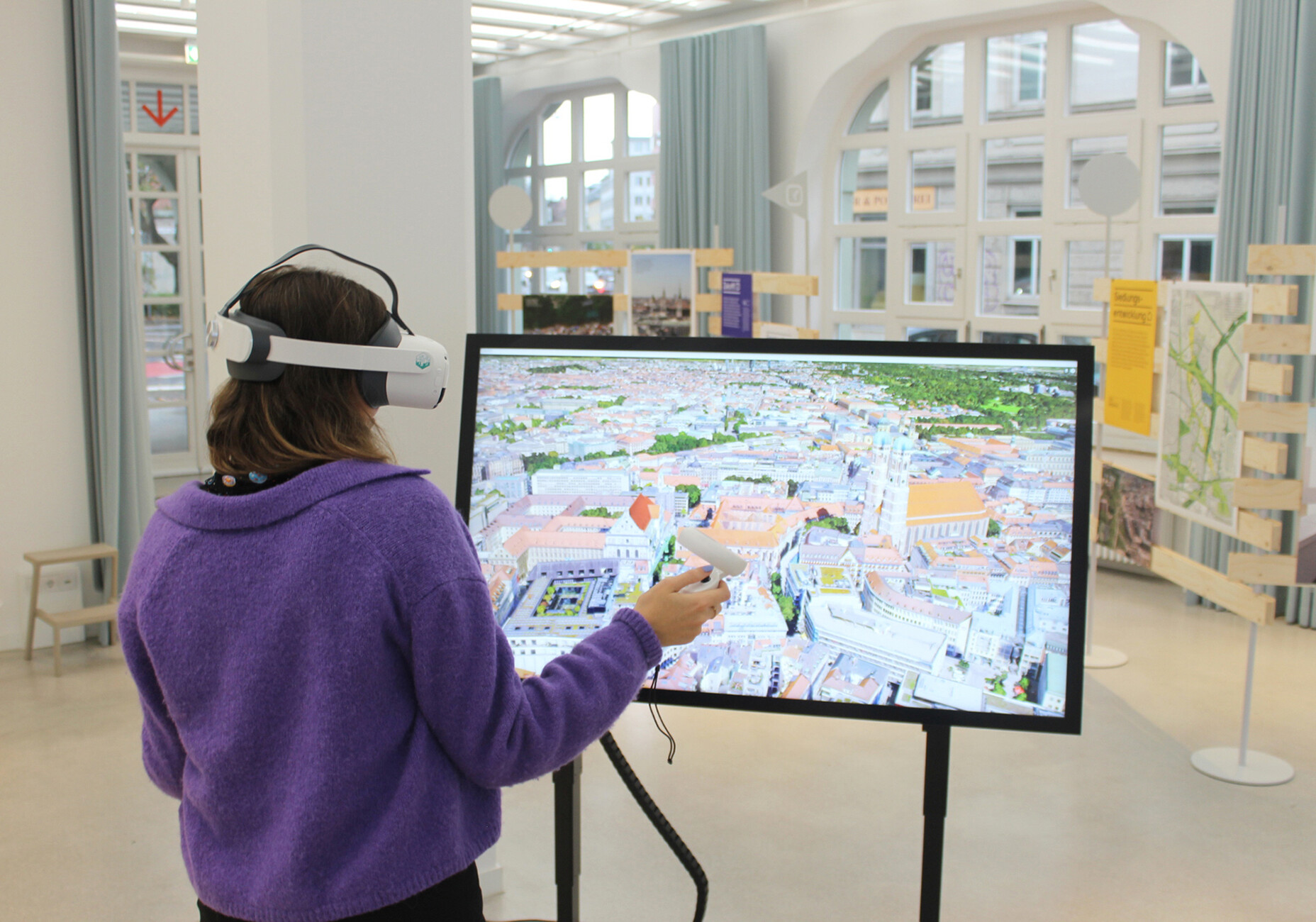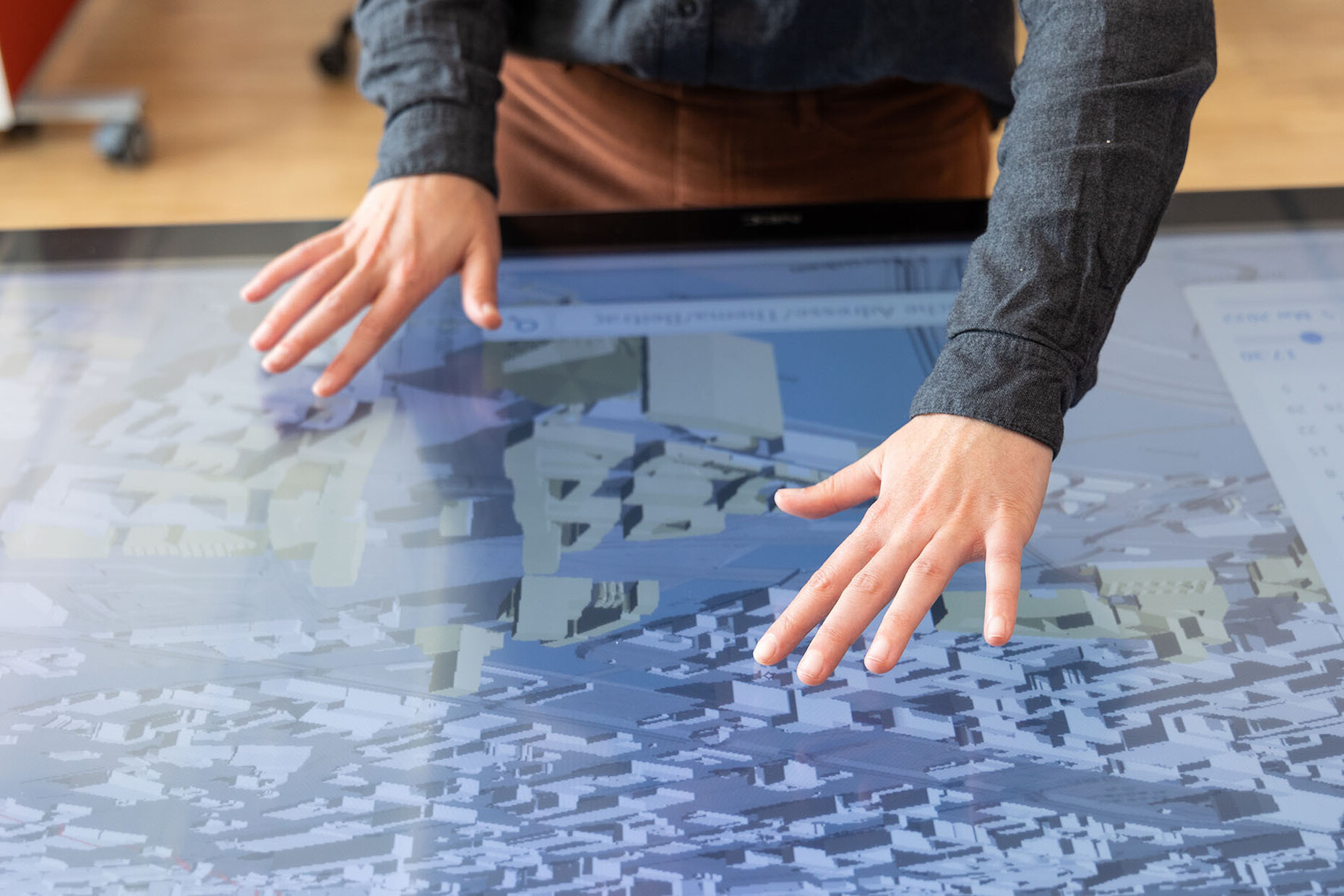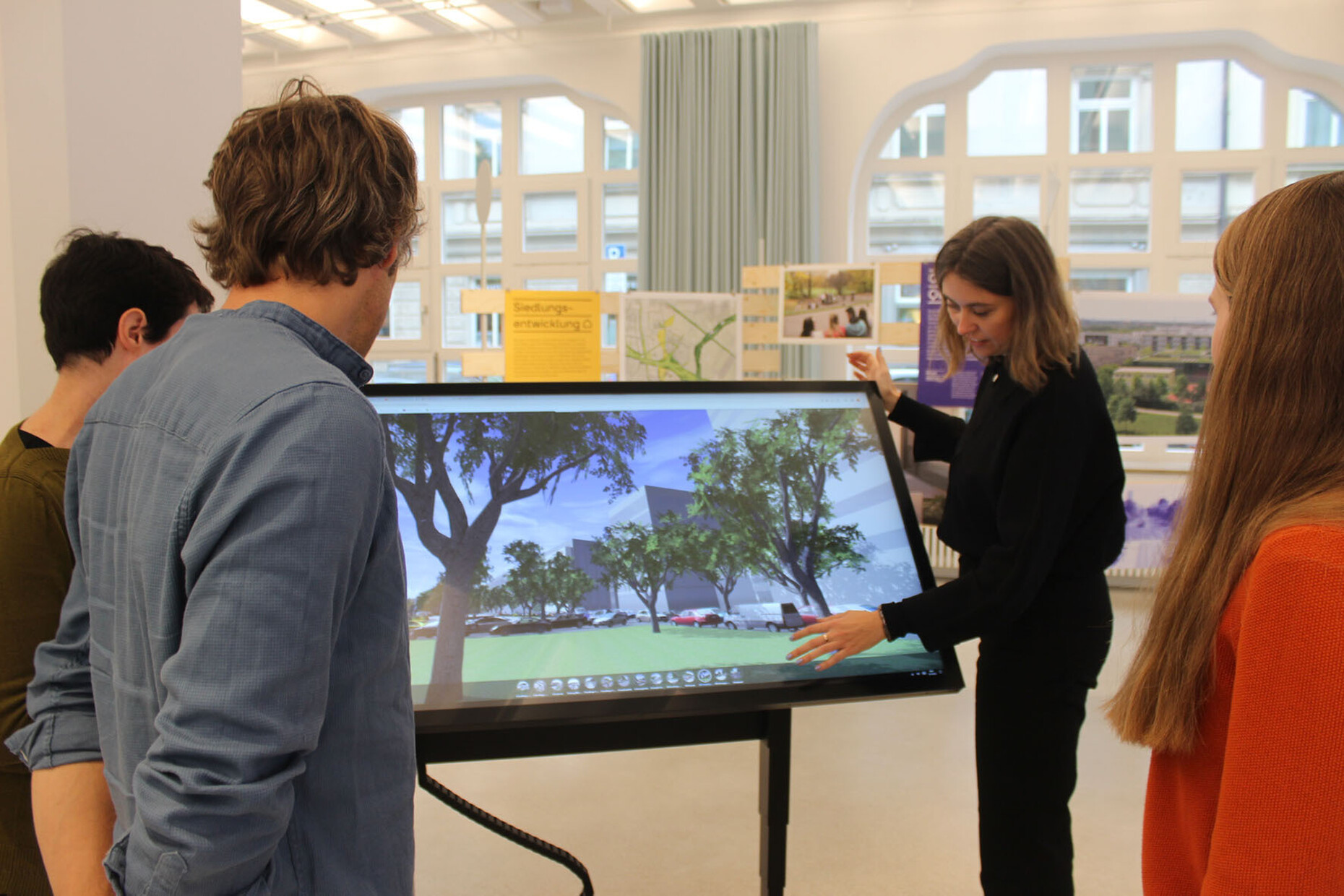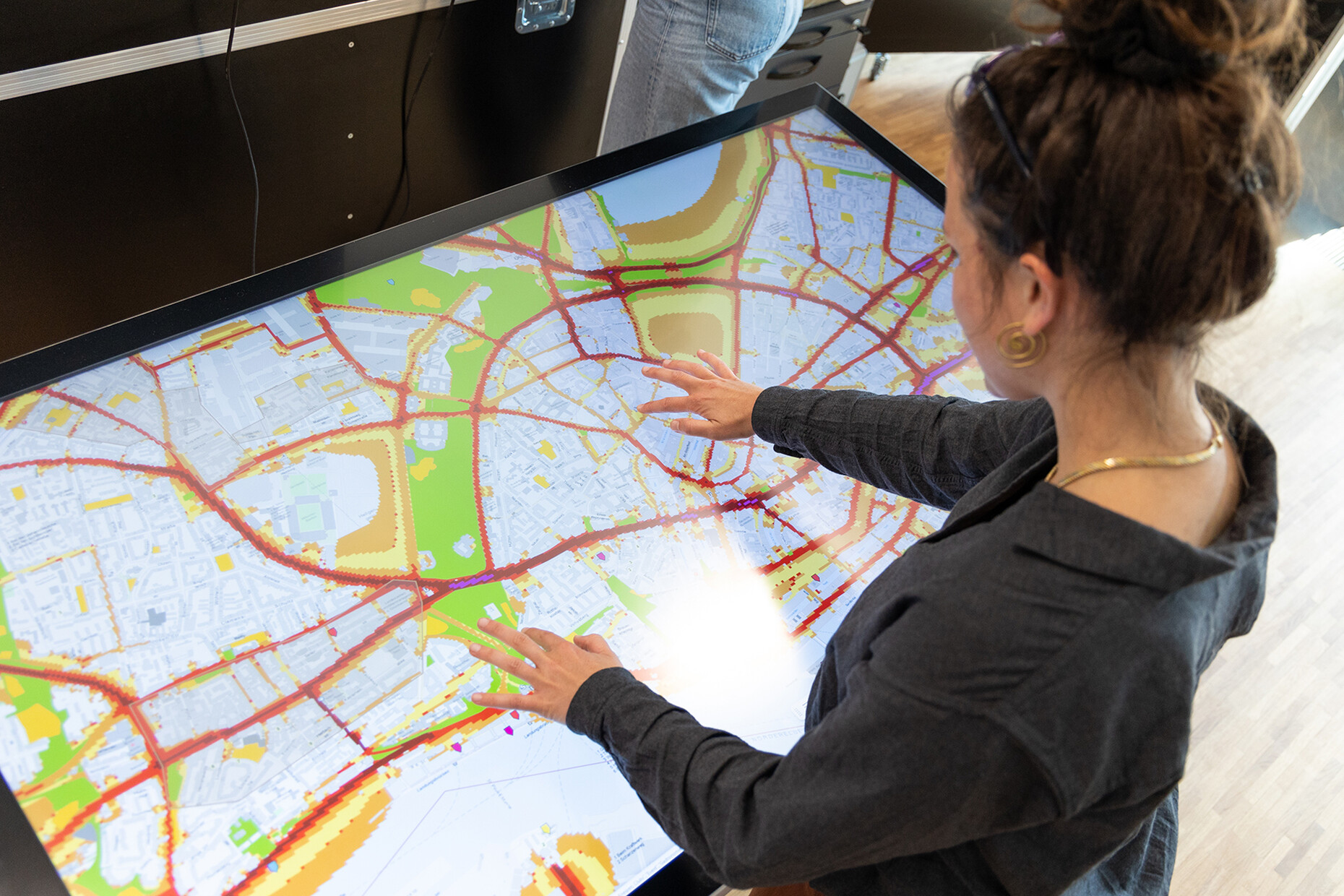Twin cities
Robert Schütz: What specific goals is the Connected Urban Twins (CUT) project pursuing?
Dr. Nora Reinecke: Urban digital twins digitally map our cities and enable "what-if scenarios" for liveable and sustainable cities. The Connected Urban Twins (CUT) project is not only driving forward the technological and conceptual development of urban data platforms and digital twins for cities and municipalities, our three partner cities Hamburg, Leipzig and Munich are also testing data-driven use cases for sustainable infrastructure and land use planning. We are focussing on the topics of social transformation, energy and climate. Another aim of our project is to develop a modular system for the use of urban digital twins in other cities and municipalities. We want to use our project knowledge to help other cities and municipalities break new ground and utilise digital twins as part of their urban development.
Can you explain the modular system further?
Dr. Nora Reinecke: The modular principle was developed in our project team in order to create a common understanding of the concept of "urban digital twins". It is based on the idea that there is no one urban digital twin for everyone. Rather, every municipality has a variety of digital resources at its disposal. These include different types of data, interfaces and applications, but also functionalities such as analyses, simulations and visualisations. From this diversity, it is important to select the building blocks that are necessary to answer an urban development question. To this end, we make our project results, such as technical building blocks, available as open source solutions.
Which solutions have you already been able to put into practice?
Dr. Nora Reinecke: I would like to mention three developments in our project that demonstrate the potential of technologies in the context of urban development: In cross-city cooperation, we have further developed the virtual reality environments of the three partner cities. These prototypes, which invite you to take virtual city tours, create an understanding of the technology itself and its potential applications: In further trials, for example, we have investigated barrier-free accessibility in cities using VR simulators, but a variety of other VR use cases are also conceivable. With the 3D project planner, we are currently developing another tool for day-to-day work in administration, which enables differentiated visualisations and analyses of construction projects and makes it easier to work with 3D models. We have also trialled the open source software DIPAS (Digital Participation System) developed in Hamburg in Leipzig and Munich in initial participation processes.
The storytelling tool (DIPAS_stories) was developed in the accompanying exchange of knowledge and experience. Map-based storytelling with this tool can make data and information more understandable, interesting and appealing. The development and further development of tools like this creates the basis for processing a wide variety of use cases, be it daycare network planning in Leipzig, climate-neutral neighbourhood development in Munich or urban development monitoring and the illustration of construction projects in Hamburg.
How do you collect the information and which data sources do you use?
Dr. Nora Reinecke: As virtual images of cities, digital twins are based on data collected via the respective urban data platforms. The data sets that can answer the specific urban development question are selected and combined on a case-by-case basis. However, urban digital twins go beyond the provision of data. For example, the 3D project planner mentioned above can be used to virtually place a building in the urban space and carry out wind or shadow simulations. This simulation data can in turn be made available via the data platform and integrated into other planning processes. Urban digital twins therefore utilise available information resources, generate new knowledge and share this knowledge within the city and municipality, but also beyond the city limits in exchange with supra-regional twins.
The CUT project also relies on citizen participation. How is this data collection realised?
Dr. Nora Reinecke: We want to supplement analogue formats and tools for the participation of urban society with innovative digital tools in order to reach new target groups. To this end, we are trialling various tools, such as the digital participation system DIPAS, which we are also developing further within the project based on our experience in selected participation processes. With DIPAS, citizens can call up digital maps, aerial images, plans, 3D city models, urban planning designs and other urban data at live events, from home or on the move, and provide precisely localised feedback on a map. Touch tables are also often used at local events, where people come together to discuss planning projects. It is also about familiarising people with the new technological possibilities.
Is private data used for citizen participation? To what extent are data protection and data security guaranteed?
Dr. Nora Reinecke: No personal data is collected, stored or processed during the participation processes with DIPAS. Our three project cities provide open administrative data via their open data portals, which can also be used for participation, for example. The idea behind open data is to make data freely accessible and to support developments that benefit the general public. This data includes, for example, weather data, traffic information, geodata and statistics. Data with personal and security-relevant content, as well as data that is subject to data protection, is not published there.
The CUT project relies heavily on the transfer of knowledge and data. Can you explain this principle using an example?
Dr. Nora Reinecke: The CUT partner cities have already gained extensive experience with their own digitalisation and smart city strategies. The cross-city partnership serves the intensive transfer of knowledge and also offers a great opportunity, which also characterises the model character of CUT: The CUT project creates solutions that leave the urban perspective and thus also show other cities and municipalities in Germany new ways forward. In concrete terms, this means that we consider potential transferability right from the start when developing applications or working on use cases and make all our results available as open source and open knowledge. To support this, we are developing new formats such as the CUT Academy or the online event series strg + c[ut], to which all interested parties are cordially invited.
AI is currently on everyone's lips – does CUT use artificial intelligence?
Dr. Nora Reinecke: Our project partner, ScaDS.AI from Leipzig, is the first point of contact for AI and big data solutions as a national competence centre for artificial intelligence. For example, ScaDS.AI is trying to use AI to fill a data gap within the city: the number of storeys in buildings. To this end, a supervised learning neural network was trained to recognise various façade objects in the image: windows, doors, dormers, shops and skylights. This experiment was used to test whether AI is a good tool for fully automatic detection.
But is AI a good tool for fully automated data capture?
Dr Nora Reinecke: The short answer is no, because due to various sources of error, AI can initially serve as a recognition aid in this use case, which enables the floors to be recorded quickly in a semi-automated and assisted manner. Recommendations for the use of AI in administration can also be derived from the lessons learnt from this specific use case.
If we look to the future, how could CUT develop, what is your vision?
Dr. Nora Reinecke: We want to be pioneers and set standards for a uniform understanding of the concept of urban digital twins and municipal data governance. In a cross-city partnership, we want to be a role model in the question of how urban digital twins can be used in planning processes. With our project results, we are laying a foundation stone that should pave the way for further innovations in urban development.











